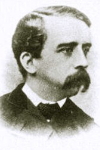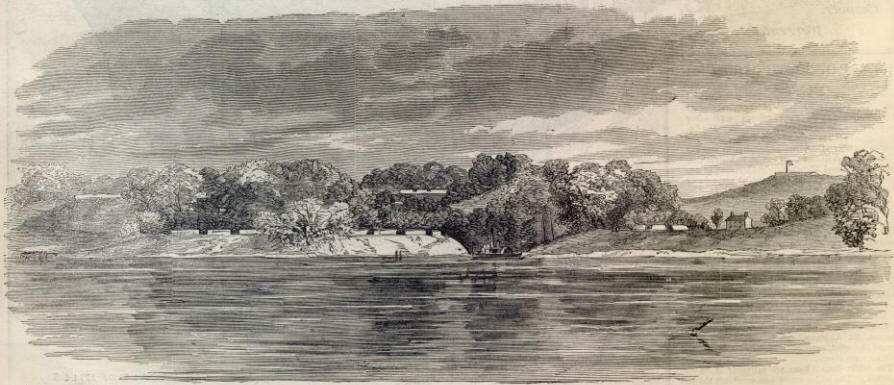 While the suggestion to turn over the Quaker Guns to the Washington Navy Yard that I wrote about last week was really a joke, the Navy Yard did have a number of cannons displayed, both as memorials to previous war as well as to see what the current enemy was up to. Today, we will look at one of the guns captured during the Civil War.
While the suggestion to turn over the Quaker Guns to the Washington Navy Yard that I wrote about last week was really a joke, the Navy Yard did have a number of cannons displayed, both as memorials to previous war as well as to see what the current enemy was up to. Today, we will look at one of the guns captured during the Civil War.
When the secessionists pulled back from Centreville in March, 1862, they also retreated from their forts lining the Potomac River below Washington. This reopened the path to the Chesapeake and thus the open ocean for the Washington Navy Yard, which had been severely hampered by the likelihood of any in- or outbound traffic being shelled. On March 9, 1862, the USS Anacostia and Yankee approached the abandoned and destroyed batteries of Shipping Point, in what is today Quantico. Here, they found not only the wreck of the CSS Page, but also a number of guns, most of which had been spiked. One, however, had had its carriage burned– yet, this fact failed to destroy the gun itself. On closer inspection, it turned out to be of British manufacture.
Captain Theophilus Alexander Blakely (who, unsurprisingly, opted to go by his middle name) was a British gun designer during the middle of the 19th Century. His cannons sported some of the refinements that had become standard in British guns following the Crimean War, including iron bands that kept the muzzles from shattering during firing, as well as rifling. They remained, however, muzzle loaders, in contrast to his more famous competitor, William Armstrong. When the British Army preferred Armstrong’s designs to those of Blakely, the latter opted to sell his services to other countries. It was thus that the Confederate Army had come into possession of a number of British-manufactured cannons. One of them was used during the Battle of Fort Sumter at the beginning of the war; another was used during the Siege of Vicksburg in 1863.

View of Shipping Point in 1862, from Harper’s Weekly (SonOfTheSouth)
The Shipping Point Blakely rifle was recognized by an artillery officer, Col. Charles S. Wainwright (pic), who approached his commanding officer with a suggestion as to how it could be lowered from its position commanding the river down to the shore, from where it was sent up the Potomac to the Navy Yard. Workers there had it “put in complete order” and mounted on the wharf and tested out. The Washington Evening Star of March 26, 1862 reported on the satisfactory nature of the trials: “The seven-inch shot were fired at a target, distant 1,700 yards, completely riddling it, which fact speaks as well for the accuracy of the gunners as for the gun itself.”
What happened to the gun itself is uncertain. In 1865, Alexander L. Holley, a well-known steel engineer, published A Treatise on Ordnance and Armor, in which he described the gun as being 100-5/8 inches long, with a 7-1/2 inch diameter, and having wrought-iron hoops holding together the cast iron gun itself. He gives no indication about the final disposition of the weapon, however. Later research indicated that the gun had seen quite a bit of action during its brief time in Confederate hands; they CSA had bought almost 1000 shells for its use in that time.
